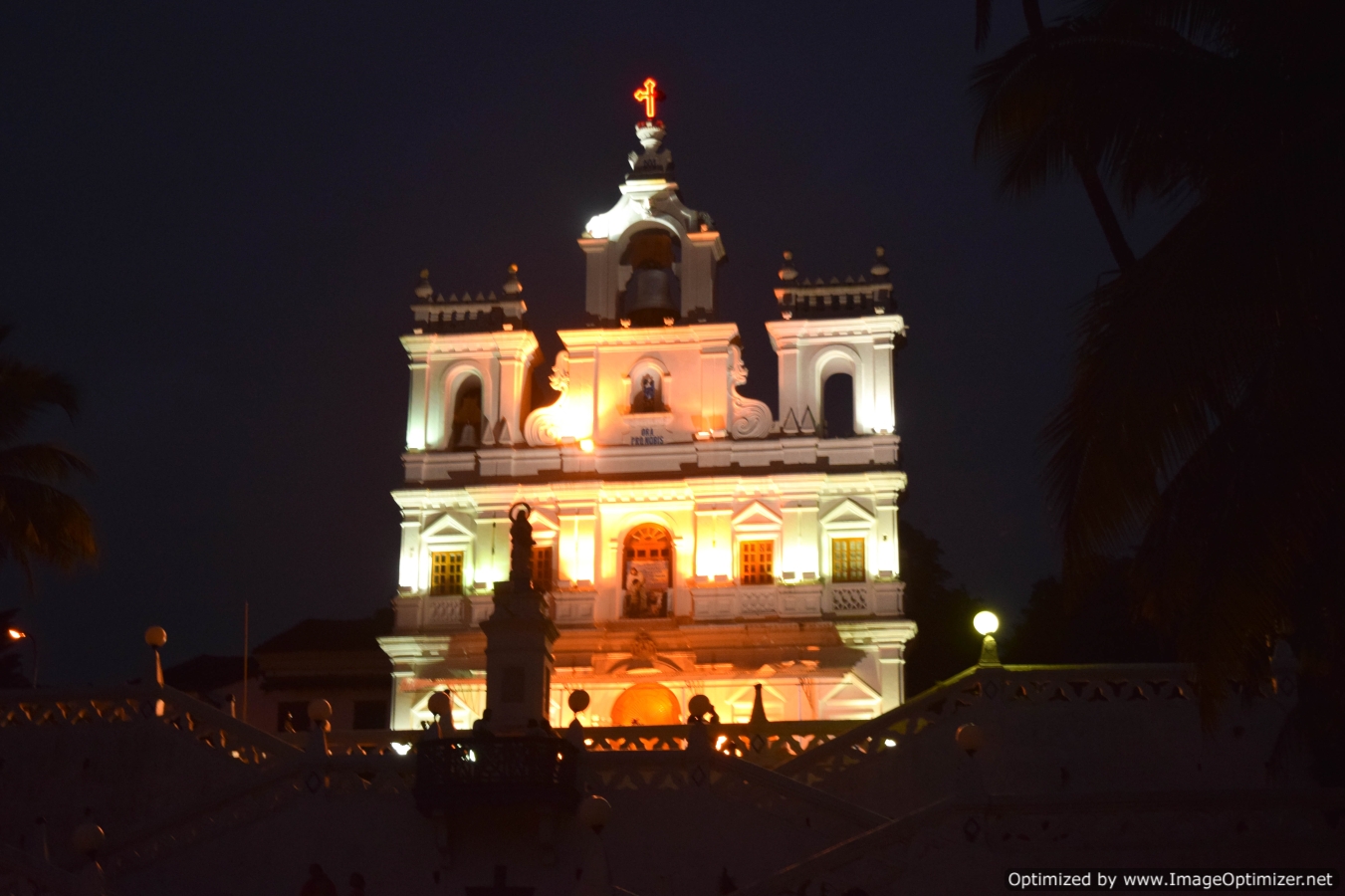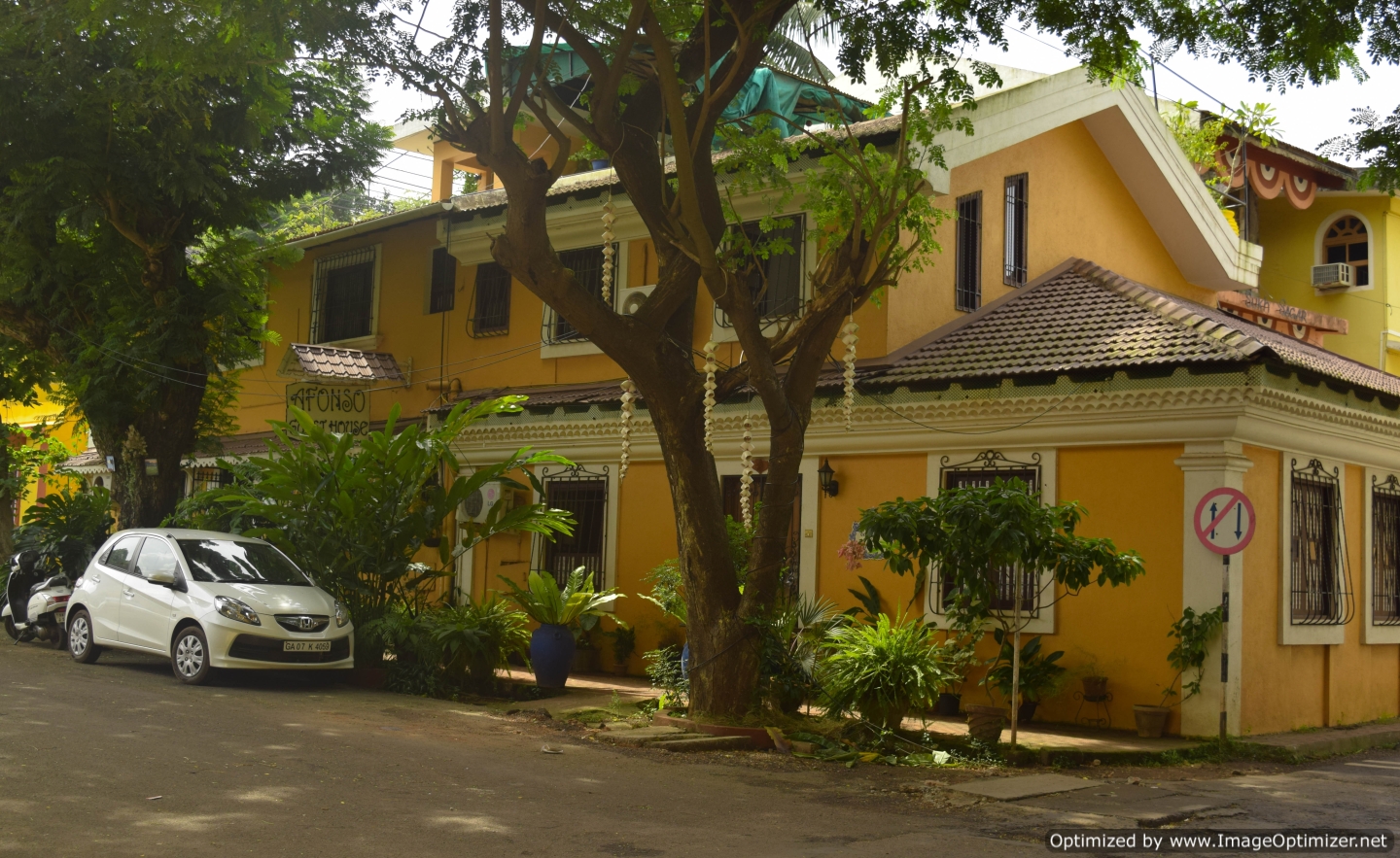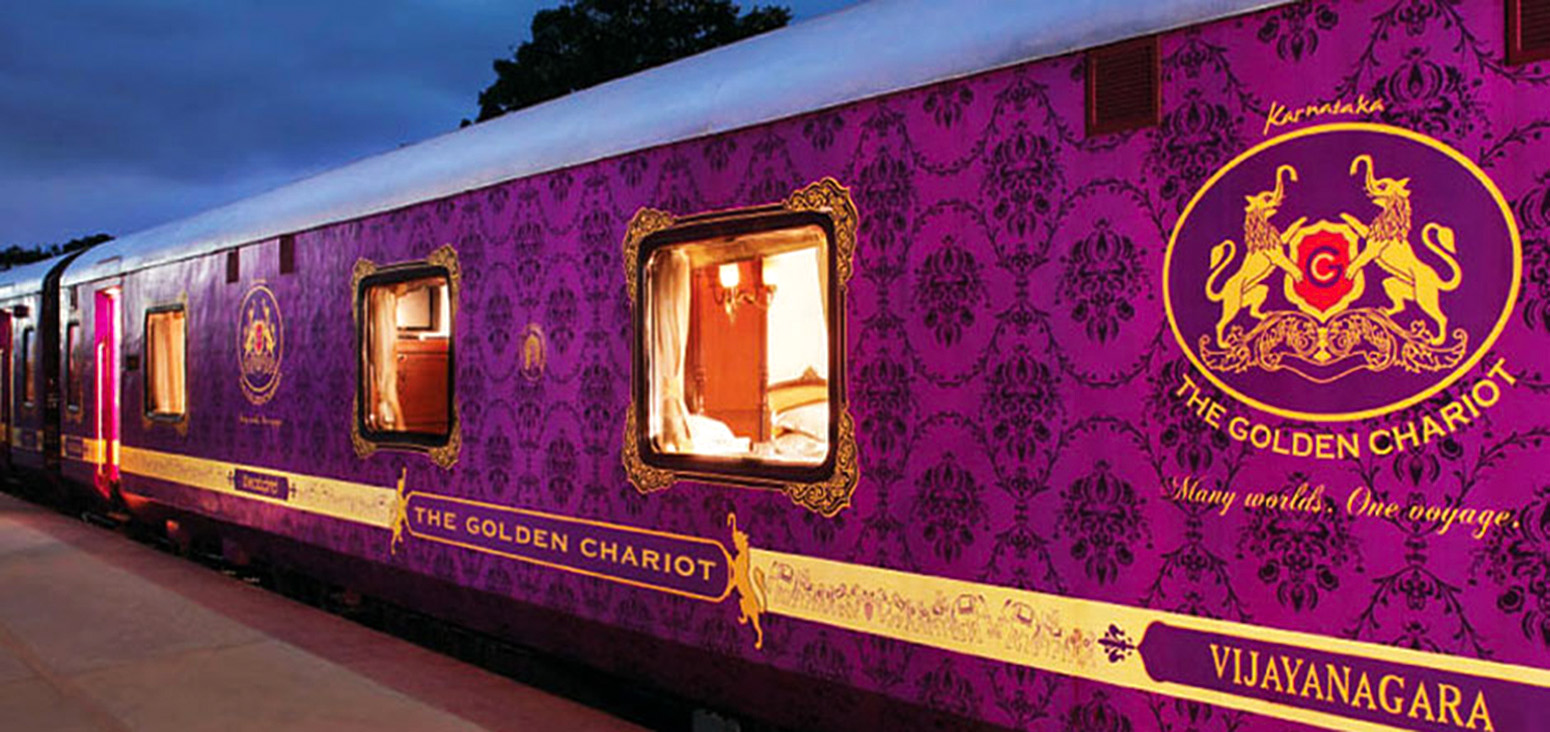A visit to Panjim’s Fontainhas neighbourhood is nothing less than a journey through a postcard from a European city. This small little atmospheric place, squeezed between the hillside of Altinho and the banks of Ourem Creek, with its colonial aesthetics, winding narrow lanes, tilted roofed houses in spectacular shades of red and blue with overhanging balconies and a quaint Mediterranean air, is an open door to Goa’s Portuguese past. Though Fontainhas can be covered in two-three hours, but to do more justice to these alleys, pencil in some more time.

Wood framed houses in saturated colours in these haphazardly designed narrow streets predominate Fontainhas
Fontainhas has taken its name from the fountain of Phoenix, which stands near the Maruti temple, leading upto the Altinho hill. Wood framed houses in saturated colours in these haphazardly designed narrow streets predominate this area and the 17th-century Church of Our Lady of the Immaculate Conception stands like a jewel in Fontainhas Latin-style crown. Built atop a hill, it stands like a giant torch of faith guarding the aesthetic riches of the neighbourhood. Built in 1541, it is believed to be one of the oldest churches in Goa. The four tiered zigzagging stairway was added three centuries later. The magnificent bell of the church weighing over 2000 kgs is second only to the golden bell of the Monastery of St Augustine (now in ruins) in Old Goa.

17th-century Church of Our Lady of the Immaculate Conception stands like a jewel in Fontainhas Latin-style crown.
Mediterranean culture pervades every street in Fontainhas; houses are painted in bright cheerful colours, beautifully written nameplates outside homes, galleries, neighbourhood bakeries, churches, blue petal curls in white ceramic tiles and residents greeting each other in Portuguese. Fontainhas is full of such delights, to be explored at leisure. Old wooden bakeries trickling the aroma of Goan breads, often doubling up as a work of art of the bygone era; small cafes at the corner of some alley to sit and engage oneself in casual talks with residents over some handmade ham sandwiches, with Goan music in the background and cheer of a world which is unimaginably open to strangers. Sample street food there, everything that is accommodated in carts from sweet beef samosa, prawn cutlets, squid soup to grilled ham sandwiches or pop into some random bar or old taverna with live music, great food, random strangers ready to open up for a talk.

Tilted roofed houses in spectacular shades in Fontainhas
There is a kind of amusing history overflow in the streets – there is a Rua 31 de Janeira (31st January Road) street which relates to the date of Portugal’s independence from Spain in 1640 and Bustling 18th June Road named after the date in 1946 on which Ram Manohar Lohia (an Indian independence activist) called a meeting that led to the end Portuguese rule in India. So if you find a differently sounding street name or a street named on a date, don’t hesitate to know the history behind its naming.
Art Galleries – Undisputedly an obvious reason to be in Fontainhas. One shouldn’t miss the Gallery Gitanjali, adjacent to the Panjim Inn. It has a collection of contemporary art and Scandinavian lithographs, lino prints and etchings from the 1950s and 1960s, plus it often doubles up as a cool venue for poetry readings, art discussions, launches, movie screenings and numerous courses on movie and art. Plus there is a cafe.
Velha Goa Galeria is another beautiful place to stop by to shop for gorgeous traditional hand-painted ceramics, including azueljos (tin-glazed ceramic tiles).

A little towards the main city is the Gallery Attic, where period furniture, pottery and antique glassware are painstakingly restored to their original glory. Here the new sits alongside the old to put to display the rich multi-cultural heritage of Goa.
To eat – Ah! How can I miss this? While the thin, winding streets of Fontainhas are an open invitation to shrug off your beachy itinerary and explore; the aroma from the decades old establishment perched in old buildings, provides the eclectic chronicle of the past and the present of the place. It is said in Fontainhas past and present lives under the same roof. So let your exploratory mind do some more work to find these hideouts.
One must stop should be Hospedaria Venite, marked with its graffitied walls and beer chandeliers and authentic Goan and Portuguese cuisine. On 31st January Road, Venite is one of the oldest lodging and boarding establishments in Panjim. Their sea-food and chicken steak is recommended.

Graffitied walls of Venite, Fontainhas
The next on my list is an old ancestral home of Linda D’Souza, converted into a restaurant, tucked away in a rather small, unassuming corner of Fontainhas. The place retains the old world décor, the rich dim interiors, pop music of the 60s and 70s, makes dining so different like taking you back to an era long gone by. Tables are also set on a patio, from where you can see all the activity of the street. And the food is delicious and not heavy on pocket. Try their crab xec-xec and kingfish steak or just any sizzler, and be assured you will not stop with one. A repeat of the order is quite common here.
Confeitaria 31 De Janeiro, anytime for sweets and savouries. The oldest bakery on 18th June Road in Fontainhas is famous for its sweets, pav and traditional Goan cake called bebinca.
Panjim Inn – achingly serene and steeped in history, this is perhaps the best place to immerse yourself in the never ending love with Goan cultural charm. On 31st January Road, overlooking the Ourem Creek, this is undoubtedly the prettiest buildings in Fontainhas. Sit in the verndah restaurant here, soak in the intimate interiors, and take in the seconds and the rich cultural heritage that it stands for. Then think of the food, which is an absolute desire here, no wonder if you feel like taking one of each from the small menu. Kingprawns and Pork is recommended here.
Baba’s wood café – No one can say no to pizzas and Baba wood café brings the Italian taste and intimacy to you. The colonial atmosphere, the earthen appeal of the décor and the furniture, rare Italian wines brought straight from the Mediterranean and above all the enticing aroma of wood oven pizzas – is irresistible. The prices are a little on the higher side but this place offers a rare dining experience.
To stay – Panjim Inn will always be the first name on this list, a heritage property with every room different in style and décor and a promise to take you back by an era.

Gallery next to Panjim Inn
La Maison, with only eight private heritage rooms, this promises a place all for yourself. The elegant interiors, informal atmosphere and spacious rooms with expressive works of art and gracefully minimalist, makes La Maison a good place to settle in.
Want to ditch the hotels altogether, welcome to the old quarter hostel, light on pocket and eclectically on par with its European counterparts. Set your holidays with lively smiling faces, backpackers from different corners of the world and a refreshingly different experience. And there is a little organic café too and a wide assortment of teas and morning yoga classes too. So, sink in, take a break, sniff the aroma, and share room and smiles with strangers.







Lovely photographs and crisp write up 🙂
Thanks Shubham 🙂 I’m planning for my second visit to Fontainhas, hopefully will be able to add more in the blog.
Wot lovely post and place… Despite being on my itinerary, I cudnt go to F, due to lack of time.
No issues, its Goa, its always one more time there
[…] Read more about the places covered: Badami, Hampi, Old Goa, Goa […]